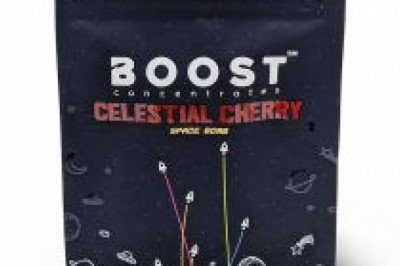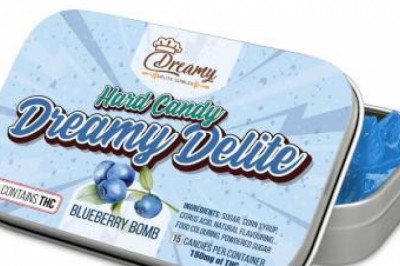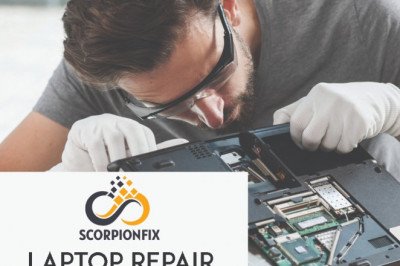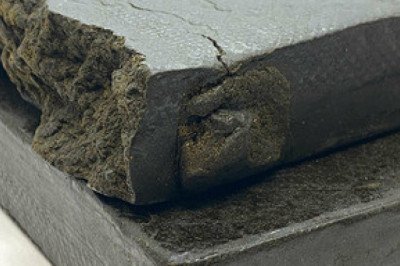views
The advantages of wear-resistant ceramic coating
Wear-resistant ceramic coating experts point out that a 300,000 kilowatt boiler will generate 7.2 million degrees less electricity per day of shutdown. But if the metal substrate coated with a layer of high-temperature wear-resistant coating will play a protective role on the metal substrate, thereby extending the service life of the metal substrate. In the chemical industry, metallurgy, electric power and other industries will often encounter metal high temperature wear phenomenon.
Hard wear-resistant ceramic coating usually refers to the cover layer applied to the surface in order to improve the surface wear resistance, corrosion resistance and high temperature resistance of structural parts. The thickness of the cover layer can vary depending on the role, usually from a few nanometers to tens of microns, and sometimes up to millimeters depending on special requirements. In order to achieve the purpose of wear resistance, corrosion resistance, heat resistance and oxidation resistance, the material of hard wear-resistant ceramic coating is often some transition group metal and non-metal composition of compounds, intermetallic compounds, etc.. These compounds not only have high melting point and high hardness, but also tend to be less susceptible to chemically corrosive atmosphere or liquid corrosion, and have good chemical stability and thermal stability.
In addition, due to the high melting point of wear-resistant ceramic coating materials, especially when the wear-resistant coating is added to the metal that can generate a dense oxide thin layer at high temperature oxidation such as Al, Cr or Ni and other elements, the high temperature oxidation resistance and high temperature corrosion resistance of the wear-resistant ceramic coating can be significantly improved.
Application of wear-resistant ceramic coatings
In the industrial environment, high temperature wear-resistant ceramic coating is used to prevent vapor corrosion friction, hardness friction and impact friction on all kinds of objects in the wear-resistant environment, so that the coal conveyor is subjected to the frictional impact of coal for a long time, the long time vibration friction of machinery, the frictional loss of fan blades, the extrusion friction of heavy machinery on the road, the equipment in the wind and sand, the metal in the flue, etc. These industrial working conditions are well solved for a long time, so that Industrial environment for a long time can not cure the knotted disease no longer exists. The company produces wear-resistant products with high wear resistance, high strength, high hardness, high corrosion resistance characteristics, widely used in: thermal power, steel, smelting, machinery, coal, mining, chemical industry, ports, terminals and other industries with serious wear.
Types of wear-resistant ceramic coating
Polymer composite wear-resistant anti-corrosion coating mainly consists of base material, filler and other additives. Among them, organic polymer, such as high-performance wear-resistant particles (pure alumina corundum porcelain ball, silicon carbide, zirconium oxide, titanium, etc.) and modified toughened heat-resistant resin to composite high-performance wear-resistant anti-corrosion polymeric materials, construction of other components bonded to the surface of the friction parts to form a continuous film, thereby greatly improving the wear resistance of the material, reducing the wear of the material surface. The coating has the ability of wear resistance as well as corrosion resistance, construction is convenient, after the shutdown of the equipment can be coated with the product after a simple treatment, heating and curing 2 hours, the equipment can be put into use, but also without heating, without heating in general 24 hours curing.
There are many kinds of wear-resistant coatings, such as oxide wear-resistant coatings, carbide, nitride, boride and silicide ceramic coatings, intermetallic compound ceramic coatings, plastic ceramic composite coatings, etc.. Among them, metal wear-resistant coatings are being used more and more widely due to their composition and good overall performance.
Metal wear-resistant coating is a coating material made of metal and alloy as the bonding phase and ceramic particles as the reinforced hard phase, which is processed by spraying, sintering, agglomeration, coating and other processes. The combination of different metal and alloy components and ratios with different ceramic end materials can make a series of metal-ceramic end materials, so that the strong toughness, thermal conductivity, processability and other characteristics of metals and ceramic materials such as high hardness, high chemical stability, insulation and thermal insulation and functional properties are organically combined, giving full play to the comprehensive advantages of the two engineering materials.
Due to the addition of the metal component, the bonding strength of the metal wear-resistant coating and the base material increases, the adhesion strength between the ceramic particles of the coating increases, the porosity of the coating decreases, and the denseness increases, so that the metal-ceramic coating has mechanical properties than the pure ceramic coating, and can be applied to greater stress and fatigue and other working conditions and obtain the desired results.
The performance of metal wear-resistant coatings depends on several factors, such as the composition and properties of the metal base, the properties, composition, percentage of the ceramic phase, particle size, etc., the degree of mutual infiltration of the metal base and ceramic, and the degree of infiltration of the entire metal-ceramic coating and the metal surface. Because the degree of infiltration determines the adhesion between the various components of the coating and the size of the bonding force between the coating and the metal substrate.











